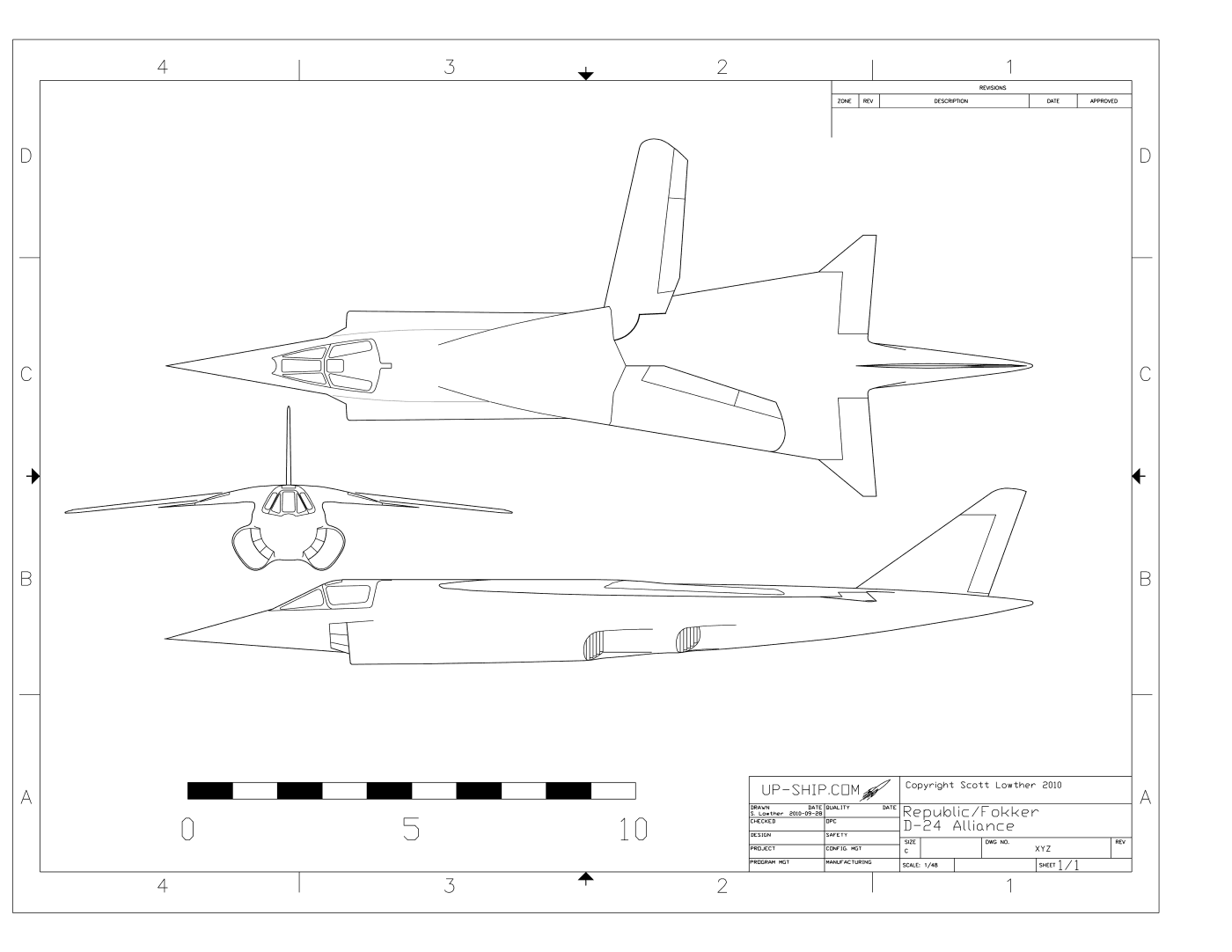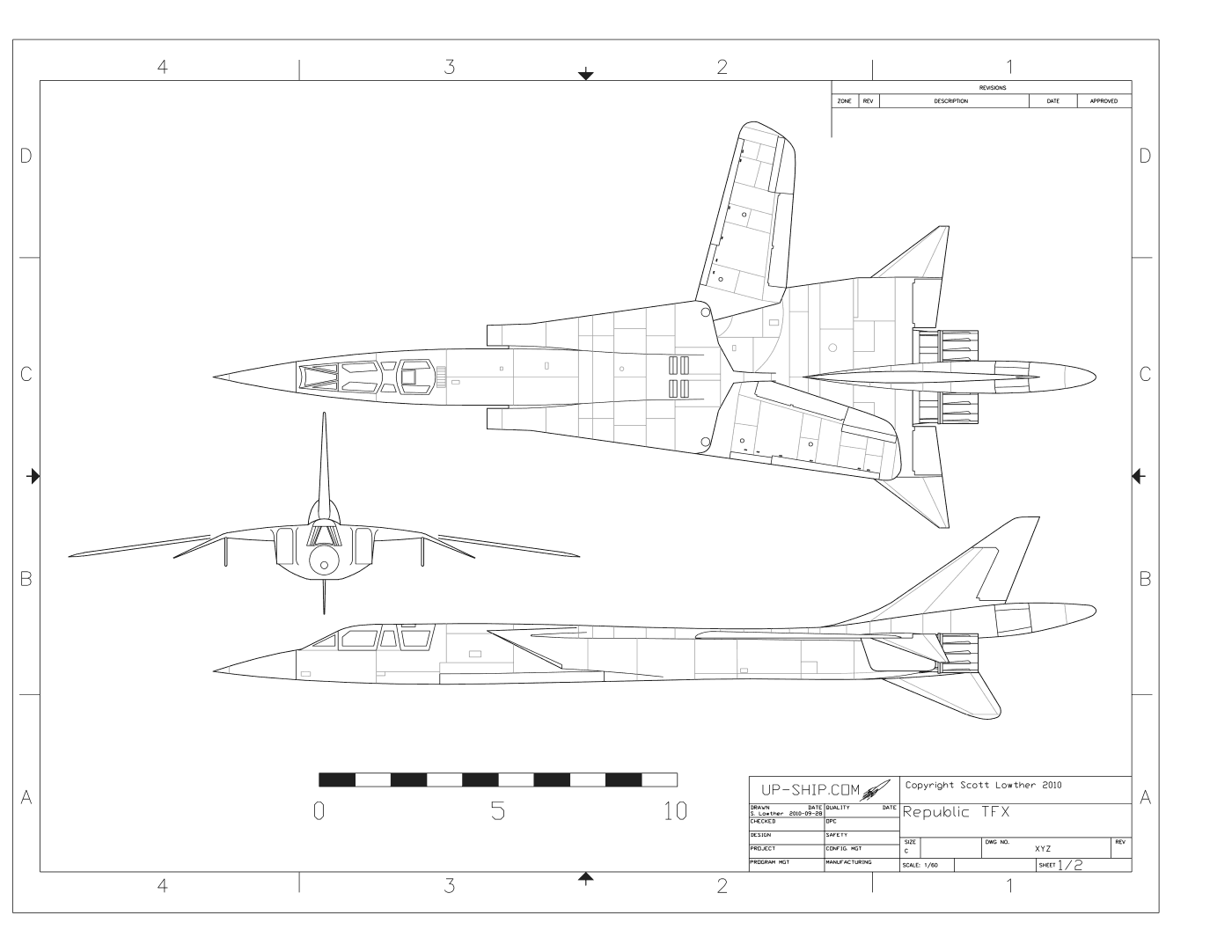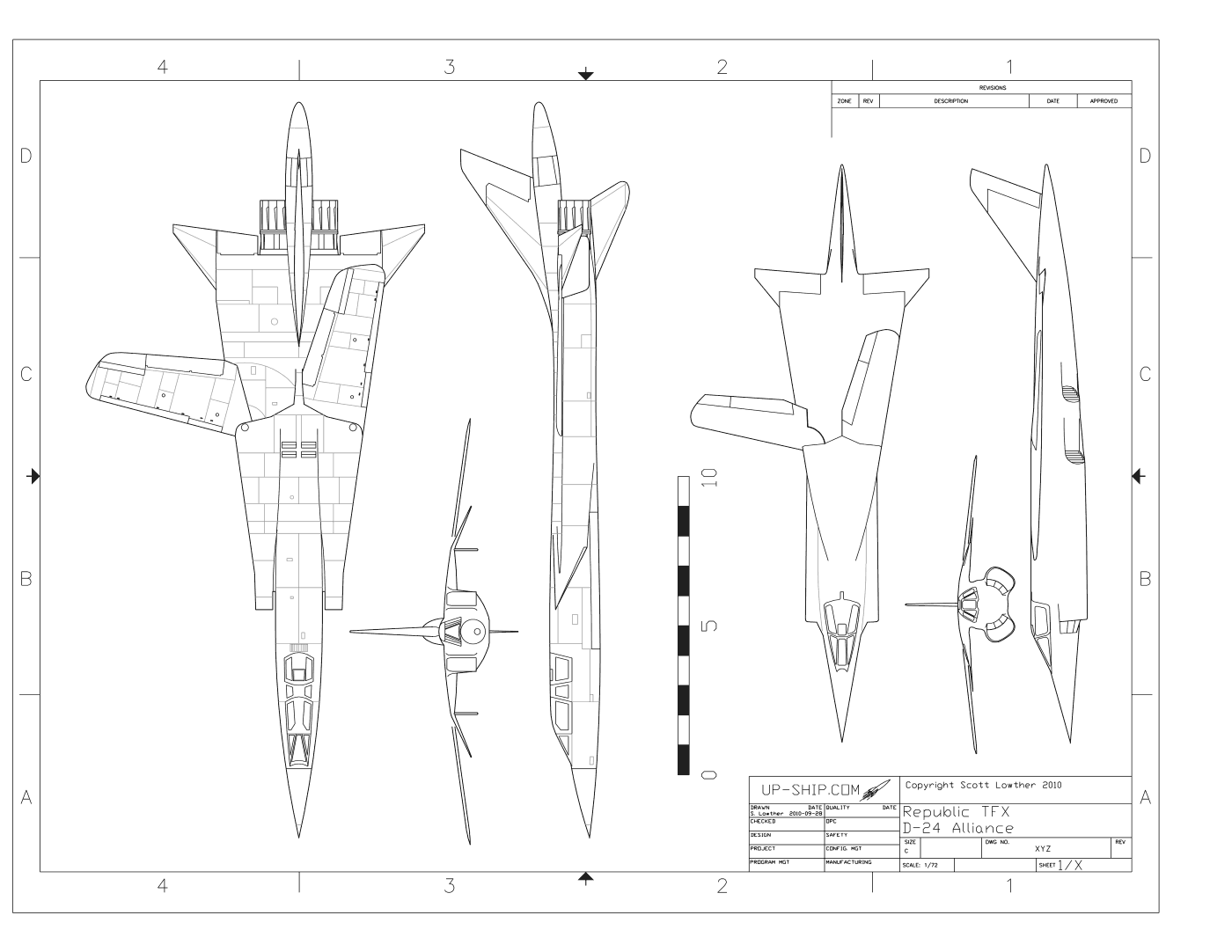In the early 1960’s, Republic Aviation came up with a general configuration for a high speed aircraft… pointy-nosed fuselage, highly swept delta wings and small variable geometry wings for low speed. Republic applied this concept to at least four aircraft designs… the relatively small D-24 “Alliance” (with Fokker), several designs for the TFX program (eventually the F-111), a Mach 3 supersonic passenger transport, and a supersonic strategic bomber.
The D-24 was a nuclear strike plane, vaguely sorta akin to the Douglas A-4 in concept, but with one major difference: a Rolls Royce Pegasus vectored-thrust jet engine, like the Harrier uses. The D-24 would be able to fly strike or recon missions from small fields, and land on even smaller fields. The other designs all used basically conventional turbojet arrangements.
A whole lot more information on these (including numerous detailed diagrams and photos of contemporary display models) can be found in issue V2N2 of Aerospace Projects Review:
2 Responses to “Republic TFX and D-24 designs”
Sorry, the comment form is closed at this time.



That looks like a awfully large aircraft to try to do VTOL with on only a single Pegasus, particularly without plenum chamber burning on the front nozzles.
Though maybe it has that, as the long intake ducts might prevent hot air reingestion.
The intake design on the TFX looks like it might have worked better than the one that actually got used on the F-111, and gave it trouble early on.
I’ll say one thing for those designs; they look _fast_… as in _really_ fast in cruising flight with the wings fully retracted.
Although the very high wing loading would make it very stable against gusts and turbulence in low-altitude supersonic cruise, God help you if you had to suddenly climb, because this thing makes a F-104 look agile in that regard, and a lot of those pancaked into the ground trying a rapid climb from low altitude flight.